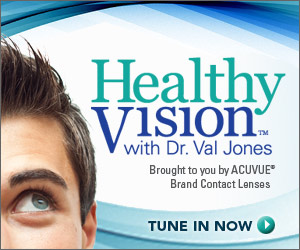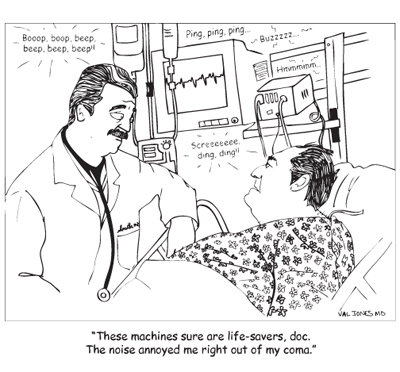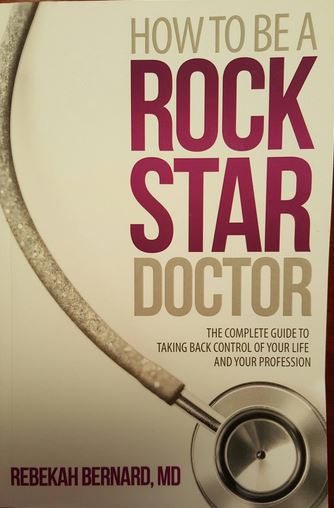May 14th, 2011 by Mary Knudson in Opinion
No Comments »

I’ve been working for a couple of months on an in-depth article on personal defibrillators that are implanted beneath the skin of a person’s chest to shock a heart that starts shaking, thereby restoring its normal beating and preventing sudden death. Discussing these defibrillators is extremely complex, which is why I am spending so much time on researching and writing the article intended to help patients and their families make an informed decision by learning the truth about the devices known as implantable cardioverter defibrillators (ICDs) — the good and the bad, your life saved vs nothing happening or the accompanying risks and harm you may receive. So when I heard that a new study would be presented at the annual scientific meeting this week of the Heart Rhythm Society, a professional organization of cardiologists and electrophysiologists who use cardiac devices in their patients, I made sure to get an advance copy of what would be presented and interview the lead author.
Potentially such a study would be of interest to physicians and to patients considering getting an ICD because it looked at all shocks the defibrillators gave the heart in patients who took part in the clinical trial, including those sent for life-threatening rhythms and in error. For several reasons, I felt the study is not ready to report to the public. It is only an abstract. The full study has not yet been written, let alone published in a peer-reviewed journal or even accepted for publication. Patients with defibrillators who received shocks were matched to only one other patient who was not shocked, but the two patients were not matched for what other illnesses or poor quality of health they had. Yet they were matched to see who lived the longest and the study looked at death for all causes, not just heart-related. One critical question the study sought to answer was this: Do the shocks themselves cause a shortened life (even if they temporarily save it) or is a shortened life the result of the types of heart rhythms a person experiences? Read more »
*This blog post was originally published at HeartSense*
March 31st, 2011 by Mary Knudson in Expert Interviews, Health Tips
No Comments »

I am saddened that Elizabeth Taylor died recently of heart failure. In his appreciation of her, film critic Roger Ebert said in the Chicago Sun-Times, “Of few deaths can it be said that they end an era, but hers does.”
She is a star that many of us felt we knew. She was a great actress and a woman of great beauty who was a hard working champion of people with AIDS and always seemed to be a determined person who knew herself. Yet she always had a vulnerable side. So many marriages, so many illnesses, so many, many surgeries, over 40, I’ve read. And then her heart problem developed. Which leads me to talk a little about that problem, mitral valve leakage.
The heart’s mitral valve
The heart has four chambers and four valves that open to let blood through to the next chamber of the heart and on out to the body and back. The valves, acting as gates, then immediately close to prevent the blood from running back where it just came from. The mitral valve looks like a mouth with leaflets that look like lips that open and close. When I saw it in action on an echocardiogram, a test that uses sound waves to show moving pictures of the heart, I thought it looked like a very sensuous mouth. Each of the valves looks different. But because it looks like a mouth, the mitral valve stands out. Blood has just left the lungs carrying oxygen and arrives at the left atrium of the heart. The mitral valve’s mouth opens to let the blood pour through into the left ventricle. As the left ventricle contracts, the mitral valve closes and the aortic valve opens to allow blood to leave the heart and get out to the body.
A mitral valve can start to leak. This can range anywhere from a condition that is minor and does not need treatment to a serious problem that leads to a weakened heart and heart failure. In Elizabeth Taylor’s case, it led to heart failure and her symptoms must have included difficulty breathing and fatigue.
I asked Edward K. Kasper, M.D., director of clinical cardiology at Johns Hopkins Hospital, to talk a little about what can go wrong with a mitral valve. I should mention for disclosure that Ed is my cardiologist and co-authored with me the book Living Well with Heart Failure, the Misnamed, Misunderstood Condition:
A leaky mitral valve – mitral regurgitation, is common and has many causes. Most people tolerate a leaky valve well, but some need surgery to correct the leak. Repair is preferred to replacement. The MitraClip (which was used for Elizabeth Taylor) is a new technique to try and fix mitral regurgitation in the cath lab rather than in the operating room. There are no long-term comparison studies of this technique compared to standard OR repair – that I know of. Repair is currently the gold standard for those who have severe mitral regurgitation and symptoms of heart failure. Outcomes are better including improvement in symptoms and survival in patients with repair rather than replacement.
What takes a person from a leaking mitral valve to heart failure?
The leakage back into the left atrium increases the pressure in the left atrium. This increased pressure in the left atrium is passed back to the lungs, causing fluid to leak into the lungs, leading to heart failure. With time, the demands of severe mitral regurgitation on the left ventricle will lead to a weakened left ventricle, a dilated cardiomyopathy (disease of the heart muscle). We try to prevent this by operating before it gets to that point.
Mitral regurgitation can also be a consequence of a dilated cardiomyopathy – the orifice of the mitral valve enlarges as the left ventricle enlarges. The leaflets of the mitral valve do not enlarge. Therefore, they no longer close correctly, leading to mitral regurgitation.
It’s easy to see why anyone would want to opt for the Evalve MitraClip over open heart surgery. The MitraClip is little different from a common test known as an angiogram in which a catheter is passed through the femoral vein in the groin up to the heart. In this repair procedure, however, the catheter guides a clip to the mitral valve where the metal clip covered with polyester fabric is positioned over the leakage and brought down below the open flaps and back up, fastening the valve’s open leaflets together. The manufacturer, Abbott, shows in a video here how blood still is able to pass through on either side of the fastening.
Elizabeth Taylor got her MitraClip repair a year and a half ago, so it must have worked for awhile. Then about six weeks ago she was hospitalized with heart failure at Cedars-Sinai Medical Center in Los Angeles where she died with her family at her bedside. For more on mitral regurgitation, see this NIH site.
Heart failure has many other causes. High blood pressure can damage the lining of blood vessels leading to deposits of cholesterol. Coronary artery disease causes heart attacks. A heart attack kills part of the heart muscle, forcing the rest of the heart to work harder and in doing so, get large and weak. Only about half the people who develop heart failure have a weak heart. In another cause of heart failure, the left ventricle becomes stiff and the heart does not fill properly. And in some heart failure, the heart itself is normal but connecting blood vessels are not or a valve may be too narrow. In all of these cases, a person is said to have heart failure because the heart and vascular system are not able to provide the body with the blood and oxygen it needs.
*This blog post was originally published at HeartSense*
February 18th, 2011 by Mary Knudson in News, Opinion
No Comments »

This was the Guest Blog at Scientific American on February 16th, 2011.
New wave of MRI-safe pacemakers set to ship to hospitals
This week Medtronic will begin shipping to hospitals in the United States the first pacemaker approved by the FDA as safe for most MRI scans. For consumers, it is a significant step in what is expected to be a wave of new MRI-compatible implanted cardiac devices.
But this is an example of one technology chasing another and the one being chased, the MRI scanner, is changing and is a step ahead of the new line of pacemakers. The pacemaker approved for U.S. distribution is Medtronic’s first-generation pacemaker with certain limitations, while its second-generation MRI-compatible pacemaker is already in use in Europe where approval for medical devices is not as demanding as it is in the U.S. So let’s check out what this is all about — what it means now for current and future heart patients and where it may be headed.
We are all born with a natural pacemaker that directs our heart to beat 60 to 100 times a minute at rest. The pacemaker is a little mass of muscle fibers the size and shape of an almond known medically as the sinoatrial node located in the right atrium, one of four chambers of the heart. The natural pacemaker can last a lifetime. Or it can become defective. And even if it keeps working normally, some point may not function well along the electrical pathway from the pacemaker to the heart’s ventricles which contract to force blood out to the body.
Millions of people in the world whose hearts beat too fast, too slow, or out of sync because their own pacemaker is not able to do the job right, follow their doctors’ recommendation to get an artificial pacemaker connected to their heart to direct its beating. The battery-run pacemaker in a titanium or titanium alloy case the size of a small cell phone, (why can’t it be the size of an almond?) is implanted in the upper left chest, just under the skin, with one or two insulated wire leads connecting to the heart. It can be programmed to run 24/7 or to only operate when the heart reaches a certain state of irregular beating. Read more »
*This blog post was originally published at HeartSense*
February 2nd, 2011 by Mary Knudson in Health Tips, Opinion
No Comments »

 I confess to loving Campbell’s tomato bisque soup. I mix it with 1 percent-fat milk and it’s hot and delicious and comforting, but one of the worst food choices I could make because one cup contains more sodium than I should have in a day. Knowing this, I have already relegated it to an occasional treat. But by the end of this blog post I will do more.
I confess to loving Campbell’s tomato bisque soup. I mix it with 1 percent-fat milk and it’s hot and delicious and comforting, but one of the worst food choices I could make because one cup contains more sodium than I should have in a day. Knowing this, I have already relegated it to an occasional treat. But by the end of this blog post I will do more.
We are overdosing on sodium and it is killing us. We need to cut the sodium we eat daily by more than half. The guidelines keep coming. The U.S. government has handed out dietary guidelines telling Americans who are over 50, all African Americans, people with high blood pressure, diabetes, or chronic kidney disease to have no more than 1,500 milligrams (mg) — or two thirds of a teaspoon — of sodium daily. That’s the majority of us — 69 percent. Five years ago the government said that this group would benefit from the lower sodium and now it made this its recommendation. The other 31 percent of the country can have up to 2,300 mg a day, say the guidelines from the U.S. Department of Agriculture (USDA) and the U.S. Department of Health and Human Services (HHS).
Or should they? The American Heart Association (AHA) recommends that all Americans lower sodium to less than 1,500 mg a day. Excessive sodium, mostly found in salt, is bad for us because it causes high blood pressure which often leads to heart disease, stroke, and kidney disease and can also cause gastric problems. People with heart failure are taught to restrict salt because water follows salt into the blood and causes swelling of the ankles, legs, and abdomen and lung congestion that makes it difficult to breathe.
I saw one recommendation by an individual on the Internet to just drink a lot of water to flush the sodium out of your body rather than worry about eating foods that have less sodium. BAD idea, especially for people with heart problems who need to restrict fluids to help prevent fluid accumulation in their bodies. The salt will draw the water to it.
But cutting our salt consumption by half is quite a tall order for an individual consumer because Americans have been conditioned from childhood to love salt and we on average consume 3,436 mg — nearly one and a half teaspoons — a day. Sodium is pervasive in our food supply. We get most of our sodium from processed foods and restaurant and takeout food, sometime in unexpected places. Read more »
*This blog post was originally published at HeartSense*













